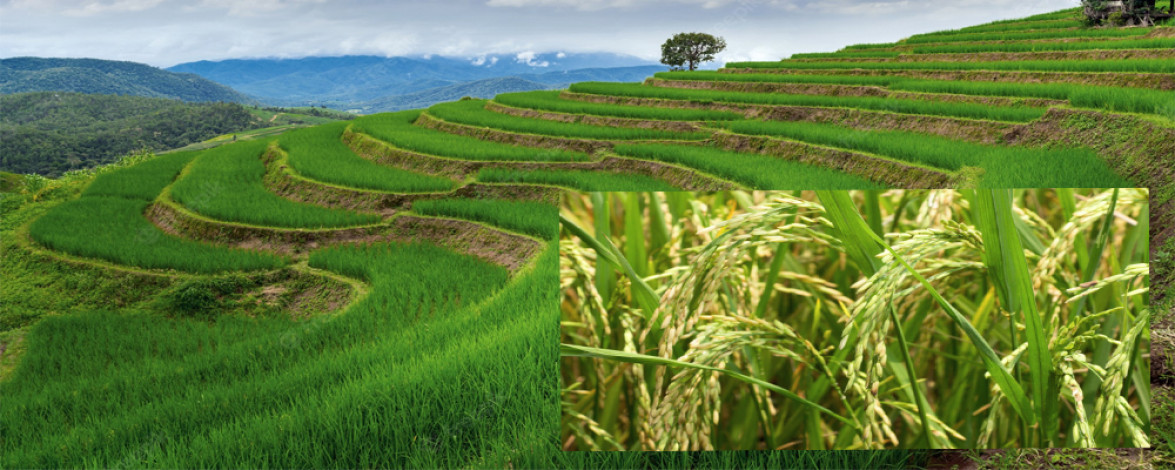
File Photo
Four agricultural societies have joined hands to promote the Bio-Circular-Green (BCG) model in paddy farms across ten provinces, covering nearly 50,000 paddy fields, with a view to making them produce premium-quality rice.
The associations are the Save Planet Agro-Economy Development Association, Community Rice Center Association of Thailand, Agriculturist Association, and Thai Rice Mills Association.
Save Planet Agro-Economy Development Association President Pana Tappinkorn recently said the BCG model will be implemented during off-season planting. This is a continuation of Save-Planet Rice's pilot project which it has successfully implemented in 20 villages.
The project helped lower investment costs, increased productivity, and improved rice quality, he said.
He said the rice produced by the villages which took part in the pilot project commanded premium prices. It was handed out as gifts at the Asia-Pacific Economic Cooperation (Apec) 2022 summit.
The model applied in the pilot project will be gradually introduced to farmers nationwide, starting with farmers in Chiang Rai, Kamphaeng Phet, Nakhon Sawan, Phitsanulok, Nakhon Si Thammarat, Phatthalung, Songkhla, Chai Nat, Sing Buri, and Lop Buri.
These farmers will be encouraged to grow their rice organically, in an environmentally friendly manner to ensure their sustainability, said Mr Pana.
The four associations recently signed a memorandum of understanding to work on sustainable, chemical-free rice production.
It will help farmers save on production costs, he said.
The MoU was endorsed by Prime Minister Prayut Chan-o-cha on Nov 21.
"There have been some orders from China. This warm reception will encourage the expansion of the BCG model and make Thai rice the country's top revenue source again," he said.
Rice production in Thailand represents a significant portion of the Thai economy and labor force. In 2017, the value of all Thai rice traded was 174.5 billion baht, about 12.9% of all farm production. Of the 40% of Thais who work in agriculture, 16 million of them are rice farmers by one estimate.
Thailand has a strong tradition of rice production. It has the fifth-largest amount of land under rice cultivation in the world and is the world's second-largest exporter of rice. Thailand has plans to further increase the land available for rice production, with a goal of adding 500,000 hectares (1,200,000 acres) to its already 9.2 million hectares (23 million acres) of rice-growing areas. Fully half of Thailand's cultivated land is devoted to rice.
The Thai Ministry of Agriculture projects paddy production for both the main and second crops to hit 27–28 million metric tons (30–31 million short tons) in the 2019–2020 season, dragged down by a drop in second crop production due to floods and drought. Jasmine rice (Thai: ข้าวหอมมะลิ; RTGS: Khao hom mali), a higher quality type of rice, is the rice strain most produced in Thailand although in Thailand it is thought that only Surin, Buriram, and Sisaket Provinces can produce high-quality hom mali. Jasmine has a significantly lower crop yield than other types of rice, but normally fetches more than double the price of other cultivars on the global market.[6]
Due to ongoing droughts, the USDA has forecast output will drop by more than a fifth to 15.8 million metric tons (17.4 million short tons) in 2016. Thailand can harvest three rice crops a year, but due to water shortages, the government is urging a move to less water-dependent crops or forgoing one crop. Rice is water intensive: one calculation says rice requires 1,500 cubic meters (400,000 US gal) of water per cultivated rai.
Source:
Online/KSU
Comment Now